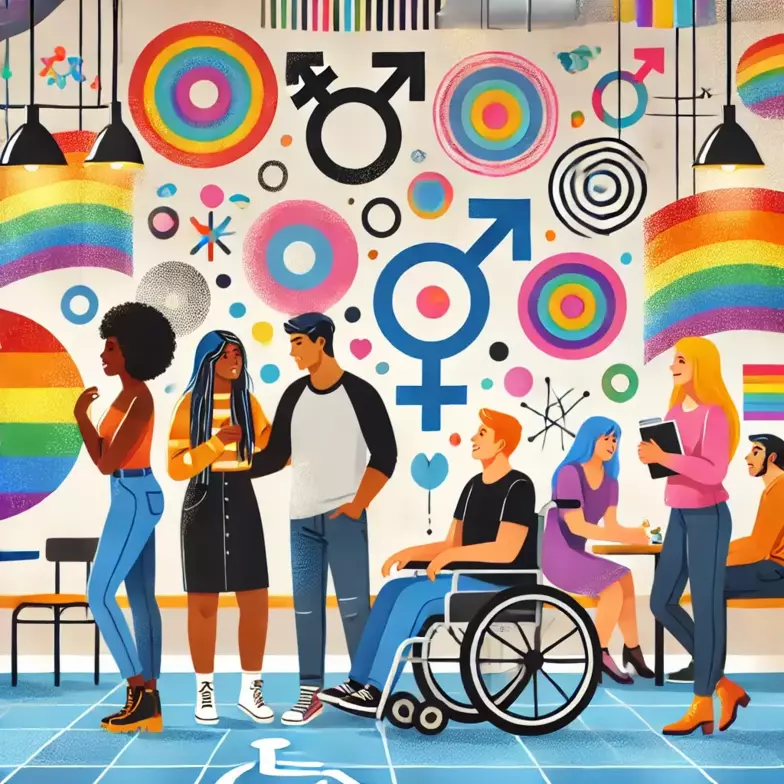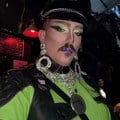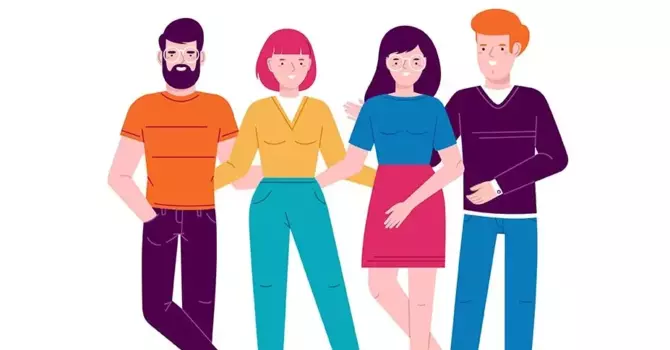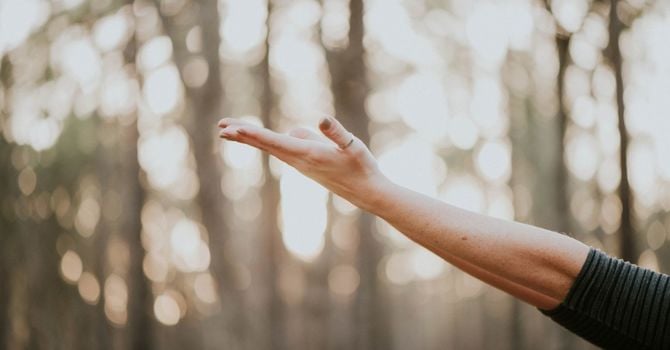
Intersectionality in Queer Spaces: Navigating Racism, Ableism, and Other Barriers
Queer spaces are supposed to be places where we can all feel safe, understood, and embraced. They're where many of us go to find community and connection. But, as much as we celebrate these spaces, they’re not perfect. Even within our own LGBTQIA+ community, issues like racism and ableism persist. Speaking from the perspective of a queer, neurodivergent person living with ADHD and Autism, I can tell you firsthand how these spaces, though well-intentioned, often fall short for many of us who live at the intersections of multiple marginalized identities.
What Exactly is Intersectionality?
Intersectionality is a word we throw around a lot, but let’s break it down. Kimberlé Crenshaw first used this term in the late ‘80s to describe how different aspects of our identities—race, gender, sexual orientation, ability—don’t exist in isolation. They overlap, influencing how we experience the world.
For example, I’m not just queer or neurodivergent, I’m both. And because of that, the way I move through the world, including queer spaces, is shaped by both my queerness and my neurodivergence. For someone who’s Black and queer, that person might be facing both racism and homophobia, and the effects don’t just cancel each other out; they compound. Similarly, if you’re disabled and queer, you’re dealing with ableism on top of everything else. It’s never just one thing—it’s layers upon layers of different struggles, and it’s important for queer spaces to acknowledge that.
Racism in Queer Spaces: Still a Problem
Even though queer spaces are built to be inclusive and welcoming, racism is still a massive problem. A lot of queer people of color will tell you that they feel left out or alienated in these spaces. This can show up in different ways—microaggressions, blatant exclusion, or even fetishization based on their race. And trust me, none of that feels good.
We need to move beyond just saying “everyone is welcome.” Are we actually creating environments where queer people of color feel respected and included? It’s not enough to wave the rainbow flag if your leadership and spaces are still overwhelmingly white. If we want to make real change, it means intentionally amplifying the voices of queer people of color, making sure they’re in leadership roles, and actively working to create spaces that are genuinely inclusive.
Ableism in Queer Spaces: It’s More Than Just Ramps
Ableism is another issue that’s often overlooked. Accessibility is about more than just whether there’s a ramp or an elevator. As someone with ADHD and Autism, I’ve found that a lot of queer events are sensory nightmares—loud music, bright lights, and crowds that feel like they’re closing in on me. It’s exhausting, and sometimes it makes me feel like I don’t belong in the very spaces that are supposed to be welcoming.
True accessibility means thinking beyond just physical accommodations. Are queer spaces sensory-friendly? Do they offer quieter areas or spaces that accommodate people who might struggle with crowds or loud environments? Are we mindful of the language we use, avoiding ableist slurs or assumptions about what people can or cannot do? Accessibility means creating an environment where everyone, regardless of their abilities, can show up fully as themselves and feel comfortable.
Where Do We Go From Here?
If we’re serious about creating inclusive queer spaces, we have to take a good, hard look at how they function. It’s not enough to just focus on sexual orientation or gender identity. We need to also consider how racism, ableism, and other forms of discrimination intersect with queerness. Are we really building spaces where all queer people feel safe and welcome, or are we leaving people behind?
To move forward, we need to start asking some tough questions. Are the events we’re hosting accessible to everyone, or just to those who fit into certain norms? Are we giving marginalized folks—especially queer people of color and disabled people—positions of leadership and power, or are they still being sidelined? We can’t just settle for surface-level diversity. If we really want to create spaces that work for everyone, we have to be willing to do the work.
Mental Health Matters
Living at the intersection of multiple marginalized identities can be tough on your mental health. Constantly dealing with microaggressions, discrimination, and the sense of not fitting in can take a toll. For folks who are neurodivergent, disabled, or part of other marginalized groups, navigating these spaces can feel overwhelming and isolating.
That’s why it’s so important to have access to mental health professionals who truly understand the unique challenges that come with these overlapping identities. At Inclusive Therapy Group, our therapists get it. We know how hard it can be to feel like you belong when you’re juggling multiple parts of yourself that society doesn’t always understand or accept. Our queer-affirming therapists are here to support you, helping you navigate the mental health challenges that come with living at these intersections. You deserve to feel seen, heard, and valued for who you are, in all your complexity—and we’re here to help make that happen.
Sources:
- Human Rights Campaign. (2020). The State of LGBTQ People of Color in America
- National LGBTQ Task Force. (2019). Disability and LGBTQIA+ Communities
https://inclusivetherapygroup.com/blog/intersectionality-in-queer-spaces/





